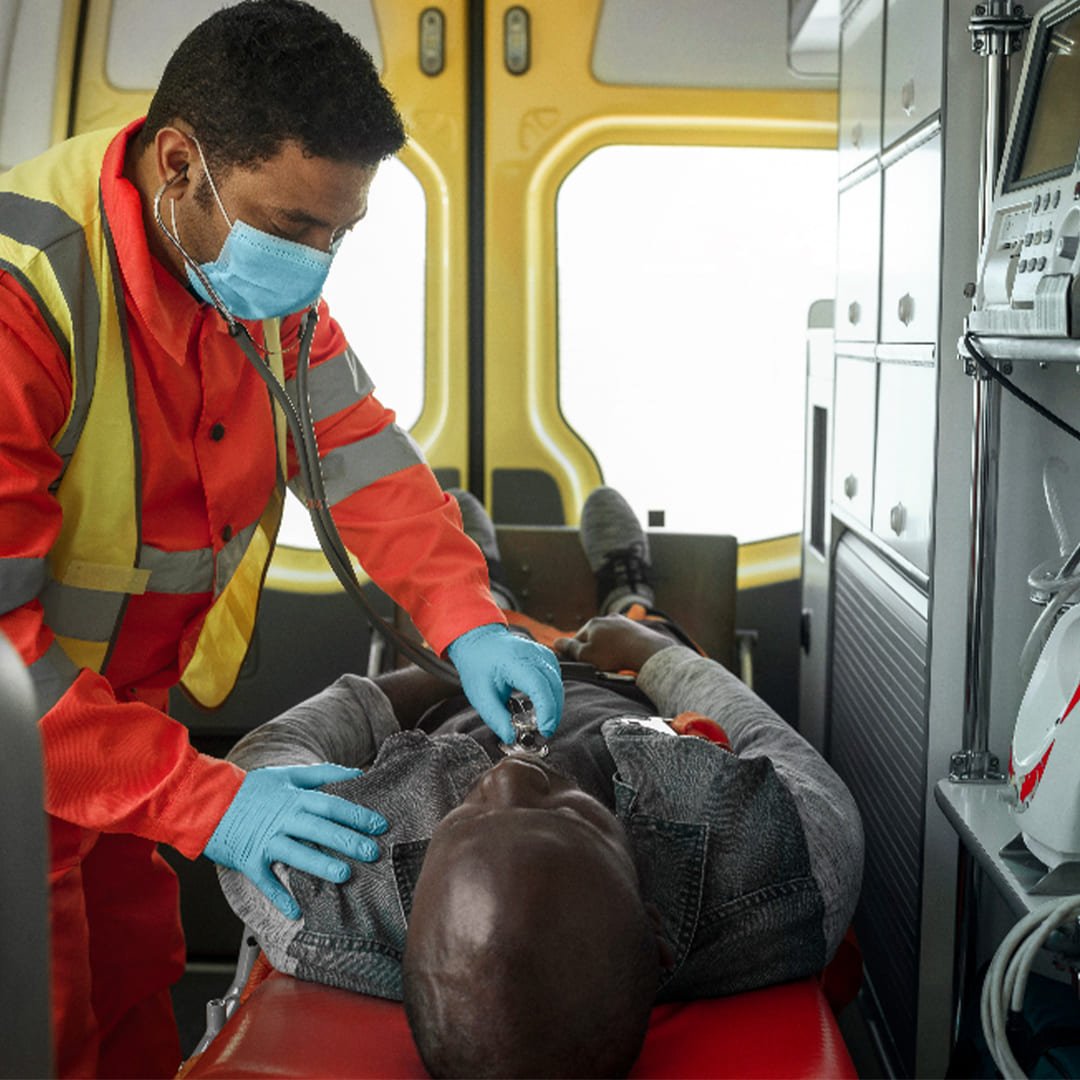
Chest Pain Management in Ambulance: Guidelines
Chest Pain Management in Ambulance: Guidelines
Prehospital steps aim to stabilize the patient, initiate appropriate treatment, and ensure seamless transfer to definitive care.
The following guidelines are based on best practices and international protocols (e.g., AHA, ESC) for managing chest pain during pre-hospital care:
1. Initial Assessment and Triage
• Scene Safety: Ensure the safety of the patient and emergency responders.
• Patient Assessment:
• Check Airway, Breathing, and Circulation (ABC).
• Measure vital signs: heart rate, blood pressure, respiratory rate, oxygen saturation (SpO2).
• Assess pain using a pain scale (e.g., 1-10) and inquire about:
• Nature of pain (e.g., pressure, sharp, radiating).
• Onset, duration, and triggers.
• Associated symptoms (e.g., nausea, sweating, shortness of breath).
2. Electrocardiogram (ECG)
• Perform a 12-lead ECG as soon as possible.
• Identify STEMI or other ischemic changes.
• Transmit ECG results to the receiving hospital if STEMI is detected.
• Repeat ECG if initial findings are inconclusive but symptoms persist.
3. Oxygen Therapy
• Administer oxygen only if SpO2 is below 94% (target: 94-98%).
• For patients with chronic lung diseases (e.g., COPD), maintain SpO2 between 88-92%.
4. Medications
• Aspirin:
• Give a loading dose of 150–300 mg (chewable), unless contraindicated.
• Nitroglycerin (GTN):
• Administer 0.3–0.6 mg sublingually every 5 minutes for up to 3 doses if:
• Systolic blood pressure >100 mmHg.
• No contraindications (e.g., recent use of phosphodiesterase inhibitors like sildenafil).
• Morphine:
• If severe pain persists despite nitroglycerin, give 2-5 mg IV, titrated as needed.
• Monitor for respiratory depression and hypotension.
• Antiemetics:
• Administer if the patient has nausea or vomiting (e.g., ondansetron 4 mg IV/IM).
5. Monitoring and Communication
• Continuously monitor:
• ECG changes.
• Vital signs (BP, HR, SpO2).
• Establish IV access for medication administration.
• Provide regular updates to the receiving hospital, including:
• Patient’s condition and symptoms.
• Vital signs and ECG findings.
• Medications given and patient response.
6. Transport and Prehospital Activation
• Prioritize rapid transport to the nearest PCI-capable hospital if STEMI is confirmed.
• Activate the Cardiac Catheterization Lab from the field to minimize delays.
• If PCI is not available within 120 minutes, consider transport to a thrombolysis-capable center.
7. Special Considerations
• Cardiac Arrest:
• Begin advanced life support (ALS) protocols immediately if cardiac arrest occurs.
• Suspected Non-Cardiac Causes:
• Consider differential diagnoses (e.g., pulmonary embolism, aortic dissection, tension pneumothorax) and manage accordingly.



